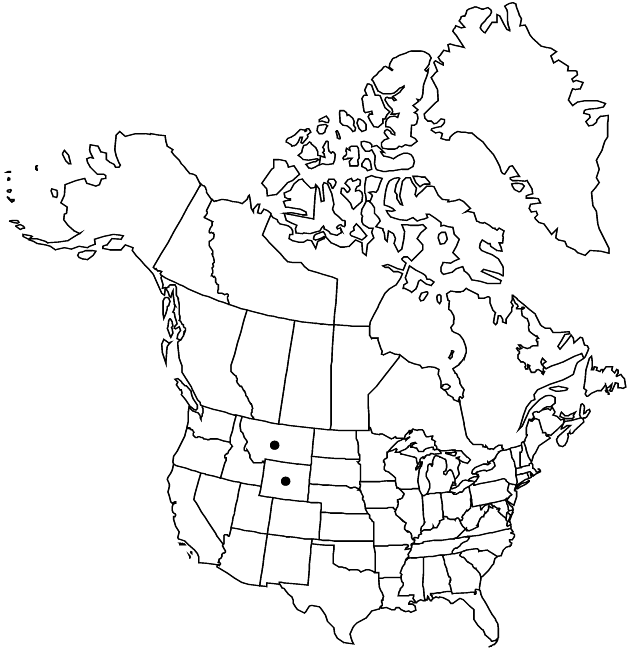Erigeron parryi
Bot. Gaz. 15: 65. 1890.
Perennials, 1.5–5(–15) cm; taprooted, caudices multicipital or with relatively short, thick branches. Stems erect, usually hirsute, rarely loosely strigoso-villous, eglandular. Leaves basal (persistent) and cauline; basal blades linear-oblanceolate, 10–25(–50) × 0.8–2 mm, cauline on proximal 1/2–2/3 of stems, gradually reduced distally, margins entire, eciliate (apices rounded to obtuse), faces equally, densely loosely strigose to hirsuto-strigose, eglandular. Heads 1(–3, rarely). Involucres 4–7 × 7–10 mm. Phyllaries in (2–)3 series (subequal), sparsely to densely villoso-strigose (basal cross walls sometimes purple), sparsely minutely glandular. Ray florets 20–40; corollas white to pink or bluish, 6–8 mm, laminae not coiling or reflexing. Disc corollas 2.4–3.5 mm. Cypselae 2–2.3 mm, 2-nerved, faces densely strigose; pappi: outer of setae or scales, inner of 12–15 (readily falling) bristles.
Phenology: Flowering Jun–Aug.
Habitat: Open, rocky (limestone) slopes and ridgecrests, sagebrush
Elevation: 1300–2200 m
Discussion
Erigeron parryi mostly has been included within the concept of E. ochroleucus, but two studies (P. Lesica 2005; G. L. Nesom 2004e) independently have confirmed its reality as an endemic of southwestern Montana and adjacent Wyoming. Leaves of E. parryi are equally hairy (usually hirsuto-strigose) on both faces, contrasted with the reduced vestiture (loosely strigose) only on adaxial leaf faces of E. ochroleucus, and the involucral vestiture is of hairs often with purplish cross walls. Also, E. parryi produces branched caudices and smaller heads with fewer rays. Lesica also noted as distinctive the caudex branches thickened by the presence of old leaf bases proximal to the current leaves.
